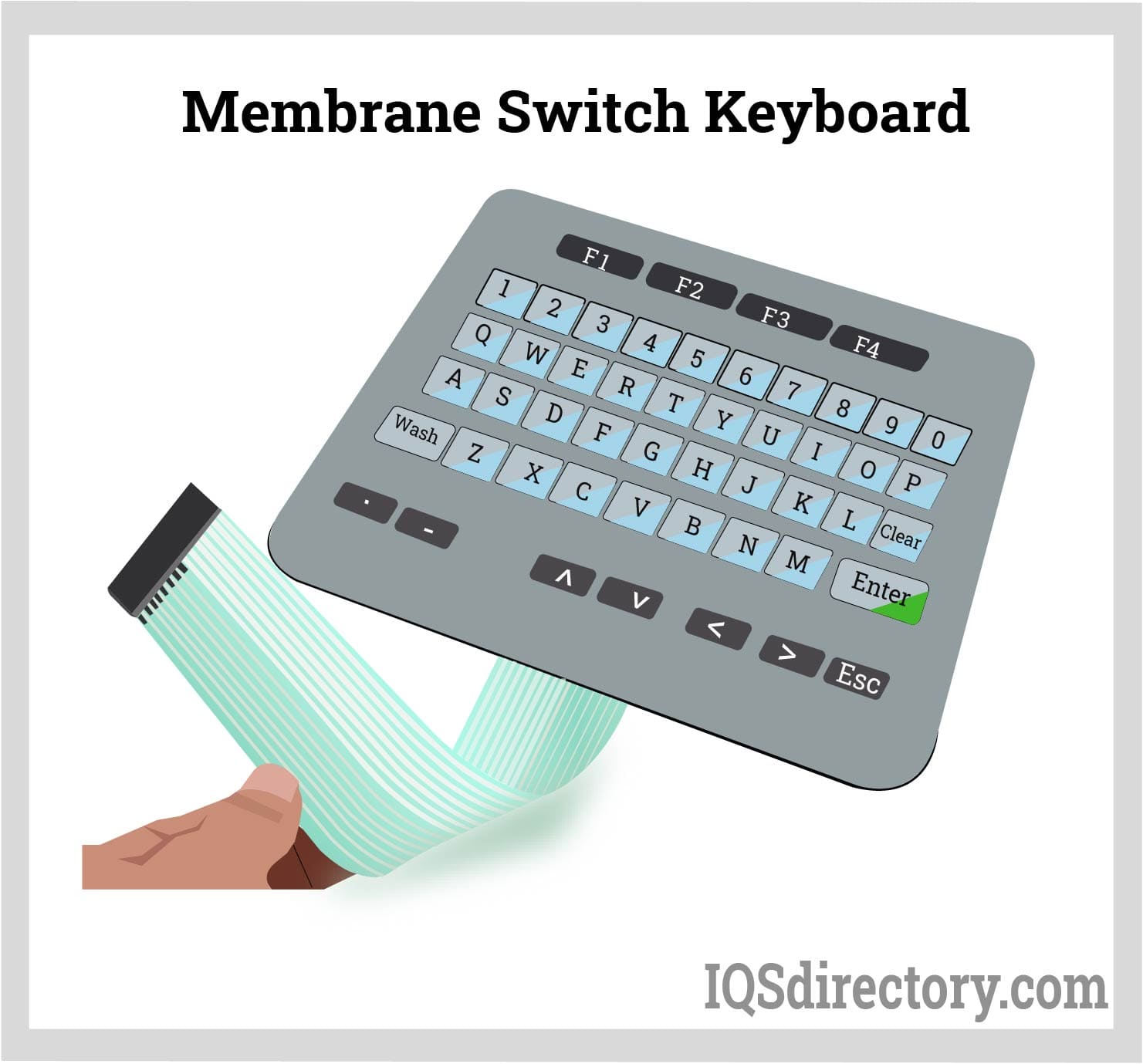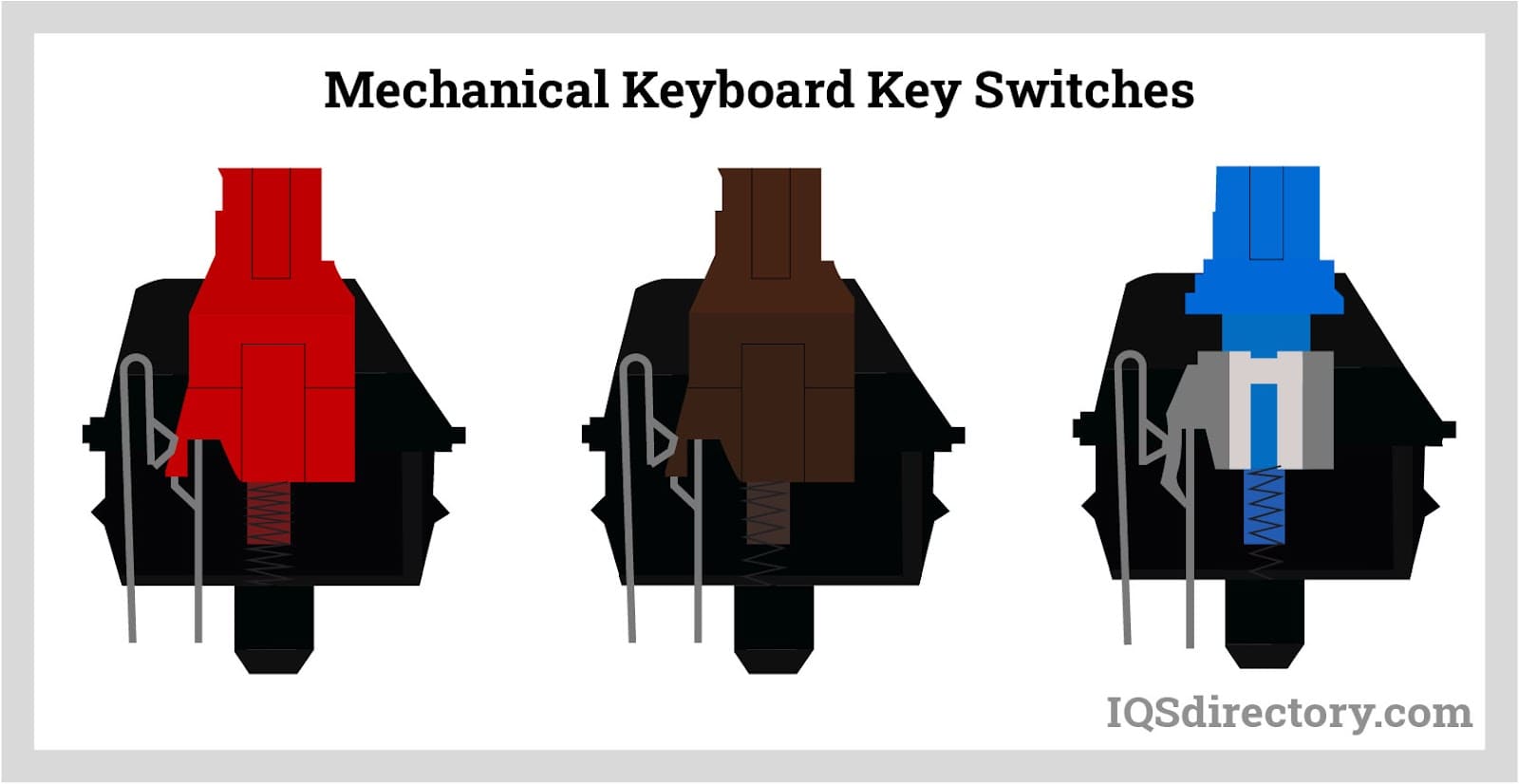The Production Process Behind Membrane Layer Change: What You Required to Know
The production process behind membrane layer switches combines mindful design, product choice, and quality control. It begins with understanding the ins and outs of membrane button design and advances through different stages, consisting of product options and printing strategies. Each phase plays an important duty in guaranteeing capability and sturdiness. The complexities of layer building and construction and the rigorous testing requirements might reveal insights that are not quickly apparent. What lies past these fundamental elements?
Comprehending Membrane Layer Switch Over Style
Membrane switches may show up basic at initial glance, their design involves elaborate considerations that ensure performance and longevity. The design process begins with an extensive understanding of individual needs, consisting of the user interface's desired application and ecological factors. Comfort designs is a crucial element, as the format needs to facilitate convenience of use while making sure that tactile feedback fulfills user expectations.Moreover, the layering of components, such as graphic overlays, adhesive layers, and conductive traces, need to be precisely crafted. membrane switch. This split configuration not just influences the switch's responsiveness but likewise affects its longevity. Interest is provided to the securing strategies used to protect against moisture and dust, which could endanger performance. Additionally, design considerations encompass looks, where color design and visual quality boost customer experience. Eventually, the layout of membrane switches over balances functionality, user experience, and resilience, ensuring that they fulfill the needs of numerous applications successfully
Products Utilized in Membrane Switch Production
When choosing products for membrane button manufacturing, it is vital to ponder both performance and sturdiness. The key materials consist of polyester and polycarbonate films, which supply versatility and strength. These films are frequently coated with adhesive to ensure proper bonding to substratums. Conductive inks, typically made up of silver or carbon, are essential for creating electrical connections within the switch, enabling trustworthy operation.Additionally, a protective layer, such as a hard layer, is frequently put on enhance scrape resistance and durability. The selection of backing material, such as acrylic or foam, can considerably affect the switch's tactile feeling and overall individual experience. Various ecological aspects, consisting of temperature level and moisture, should direct product selection to assure peak performance in certain applications. Inevitably, the best combination of materials adds to the membrane layer button's functionality and life-span, making informed selections important for manufacturers.
The Printing Refine: Creating Graphics and Text
The printing process in membrane button manufacturing plays a considerable role in generating premium graphics and message. Various visuals style strategies are employed to guarantee visual appeal and performance, while careful ink option methods are important for resilience and performance. Recognizing these aspects is basic for attaining best cause membrane layer button layout.
Graphic Design Techniques
Graphic style techniques play a vital role in the printing procedure of membrane layer switches, as they define how graphics and text will ultimately show up on the end product. Effective graphic design entails the calculated use of layouts, colors, and typefaces to boost readability and aesthetic charm. Designers typically use vector graphics for scalability, making certain that photos continue to be sharp at numerous sizes. In addition, focus to contrast and positioning is important, as it influences individual interaction and aesthetic quality. The incorporation of branding elements, such as logos, have to be handled with care to preserve brand stability. In general, thoughtful graphic design methods add significantly to the functionality and good looks of membrane layer switches, affecting customer experience and item performance.
Ink Option Methods
Picking the suitable ink is important for achieving the wanted visual quality and sturdiness in membrane switch manufacturing. Numerous ink kinds are used, including solvent-based, water-based, and UV-curable inks. Each type supplies unique qualities, such as adaptability, bond, and resistance to ecological factors. Solvent-based inks are typically preferred for their longevity and vibrant shades, while water-based inks are a lot more eco-friendly but may have limitations in attachment. UV-curable inks provide rapid healing and durable efficiency. Furthermore, shade matching methods assure that the chosen inks align with layout specifications. Eventually, the option of ink should think about variables such as application approach, substratum compatibility, and end-use requirements to attain remarkable results in membrane switch graphics and text.
Layer Construction and Assembly

Material Option Refine
A careful selection of materials is vital in the production process of membrane buttons, as it straight influences performance and sturdiness. The main products used include polyester, polycarbonate, and various conductive inks. Polyester is usually favored for its excellent resistance to chemicals and abrasion, making it appropriate for extreme settings. Polycarbonate, on the various other hand, gives premium clarity and influence resistance, which is beneficial for applications requiring presence and toughness. Conductive inks, commonly made up of silver or carbon, are essential for creating trusted electric paths. In addition, the selection of sticky products impacts the total stability of the button - membrane switch. Evaluating variables such as ecological direct exposure, tactile comments, and aesthetic needs overviews manufacturers in selecting the most effective products for their specific applications
Layer Adhesion Strategies
Sticking layers in membrane button building is an important procedure that ensures performance and longevity. Different bond methods are employed to secure excellent bonding in between layers, which commonly include the use of adhesives, warmth, and pressure. Pressure-sensitive adhesives (PSAs) are generally utilized for their simplicity of application and instant bonding capacities. In addition, thermal bonding methods can be applied, where warmth is used to activate sticky residential properties, safeguarding a strong bond. The selection of adhesion method mainly depends on the products included and the particular application requirements of the membrane layer button. Appropriate alignment and uniform application of adhesives are vital to stop problems, protecting the switch runs efficiently throughout its designated life-span.
Quality Assurance Actions
Guaranteeing high quality control during the layer construction and assembly of membrane buttons is essential for preserving performance and dependability. you could try here This process typically involves several critical steps, including detailed inspections at each stage of production. Suppliers make use of sophisticated screening approaches, such as peel tests and attachment assessments, to confirm the stability of layer bonds. Furthermore, visual evaluations are performed to identify any type of flaws in printing or material disparities. Ecological problems, Get the facts such as temperature level and moisture, are carefully kept track of to ensure perfect curing and attachment. Additionally, regular calibration of tools assists maintain accurate manufacturing standards. By executing these quality assurance steps, manufacturers can greatly reduce the risk of product failure, ensuring that the final membrane switches satisfy the called for requirements and customer expectations.
Testing and Quality Assurance Actions

Innovations in Membrane Layer Switch Innovation
As developments in innovation proceed to develop, membrane layer switches are taking advantage of ingenious developments that improve their functionality and user experience. One noteworthy development is the integration of capacitive touch technology, which enables for more receptive and intuitive customer interfaces. This change not just enhances looks yet additionally reduces mechanical deterioration, expanding the life-span of the switches.Additionally, improvements in graphic overlay products have brought about boosted sturdiness and resistance to environmental aspects such as wetness and UV light. These materials now offer enhanced clarity and illumination, additional raising the aesthetic appeal.Furthermore, the incorporation of clever modern technology is changing membrane layer switches over right into interactive control board, enabling connection with IoT devices. This connectivity cultivates a smooth user experience, leading the way for applications in different markets, from medical care to customer electronics. Collectively, these advancements placement membrane switches as vital components in modern tool design.
Frequently Asked Concerns
For how long Does the Membrane Layer Switch Production Refine Take?
The period of the membrane layer button manufacturing process can vary substantially. Elements such as complexity, products used, and production quantity impact timelines, with regular manufacturing varying from a couple of days to several weeks for completion.
What Are the Usual Applications for Membrane Layer Switches?
Membrane layer switches are typically utilized in various markets, including vehicle controls, household appliances, clinical tools, and customer electronic devices (membrane switch). Their convenience and durability make them optimal for applications needing user-friendly user interfaces and trusted efficiency in varied atmospheres
Can Membrane Layer Switches Be Personalized for Specific Demands?

What Is the Life-span of a Normal Membrane Switch Over?
The lifespan of a normal membrane layer switch varies, however typically, it varies visite site from 1 to 5 million cycles. Elements such as use, environment, and material quality substantially influence resilience and total efficiency over time.

Are Membrane Changes Eco-friendly?
The ecological friendliness of membrane switches differs. Some products used may not be recyclable, while others can be environment-friendly. The overall impact relies on producing techniques and products, necessitating cautious consideration during option and disposal. The production process behind membrane layer changes combines cautious style, product selection, and quality control. It starts with recognizing the details of membrane button layout and advances via numerous phases, consisting of material choices and printing strategies. When choosing materials for membrane button manufacturing, it is vital to contemplate both performance and sturdiness. A careful choice of materials is crucial in the production procedure of membrane layer buttons, as it directly influences capability and sturdiness. The selection of attachment method mostly depends on the products entailed and the details application demands of the membrane button.